Is fashion art? Fashion is not art. There has been a longstanding association between art and fashion. In contemporary times, fashion and art are commonly used interchangeably. According to Benton (2012), fashion and art are both mediums of creative self-expression within any given period. Art and fashion share symbiotic relationships because artistic ideas of any period are reflected in fashion, and fashion expressions of any time are reflected in artworks. However, the symbiotic and self-expressive relationships between fashion and art do not mean the distinctiveness between fashion and art are non-existent. Rather, fashion and art possess actual distinctiveness in both their conceptual and material nature.
Before exploring the separateness between fashion and art, it is first worth understanding the historical place of fashion and art in human societies. In contemporary history, fashion has been defined as, “the prevailing style of dress or behaviour at any particular time” (Mackrell, 2005, p. 37). In Europe, contemporary conceptualization of fashion began in the early 15th Century at the intersection between late middle Ages and Early Renaissance. Since 15th Century, several styles of dress code and behaviours have evolved. Once, William Shakespeare commented that, “fashion wears out more apparel than the man” (Ribeiro, 2017, p. 51) meaning that fashion changes rapidly. Thus, fashion is a time-based concept. Benton (2012) described that from a scholarly standpoint, fashion has been defined as ‘the cultural construction of the embodied identity.’ According to Kim (1998), fashion is an embodied identity because fashion styles, particularly in regards to clothing, originate from self-expressive desires of stakeholders including fashion designers. In the general public, greater emphasis on fashion is paid to clothing designs, though fashion also encompasses objects including automobiles, furniture and architectural designs.
Contrarily, art has been defined as, “the signature of civilizations” (During, 2003). In recorded history, art as a concept has existed longer that fashion. In ancient Greek civilization, Plato defined art as ‘mimesis’ meaning imitation. Considering the holistic definition of art from the Ancient Greece to modern times, the conceptualization of art has fallen into three distinct spheres including form, expression, and representation. Kim (1998) said that in earlier human civilization, artistry referred to the process of representing nature through copying or replicating. In the Romantic Era, artistry meant the dramatic expression of aesthetic values. According to Geczy (2015), Romantic art became a means through which artists evoked emotional responses from the audience. From the 20th Century onwards, art has been defined based on formal elements including unity, harmony, balance and rhythm. Despite the changing definitions of artistry through human civilizations, the persistent conceptualization of art revolves around the original and creative expression of aesthetic values that communicates the artists’ thoughts and emotions.
The separateness between fashion and art lies in the aspects of purpose, durability, skill, and interpretation. Regarding purpose, fashion motivates while art inspires. According to Adamson (2009), fashion, particularly clothing fashion, is a product of collaboration between wearers, manufacturer, and designers. Fashion designers partner with models and clothing manufactures to produce new style of dresses. Rawsthorn and Rhodes (2007) explained that fashion results from the motivation to produce a new style of clothing within a specific period. Cultural theory specify that fashion is a vessel of social advancement. Fashion arises from the motivation to express cultural modernity through trendy aesthetics. The association between designers, manufacturers and wearers are pegged on the aspects of personal identity, social class, consumption culture, and time.
The image below of the iconic silk-made Lobster Dinner Dress by Dali and Schiaparelli (1937) represented the rise of luxury female dress codes in the United States. According to Adamson (2009), the use of silk was intended to meet the luxury consumption behaviours of the 1930s because silk was the most expensive fabric. Both Schiaparelli and Dali specialized in the design and production of dresses for wealthy clients, including members of the British crown. Mackrell (2005) noted that the upper part of the Lobster dress is sleeveless, which at the time, was considered inappropriate for the conservative societies of the early 20th Century. However, Schiaparelli and Dali were motivated by the rising liberalism which encouraged women to take erotic charge of their attire. In essence, the Lobster dress of 1937 revealed that fashion borrows heavily from the prevailing configurations of the society at any given time.

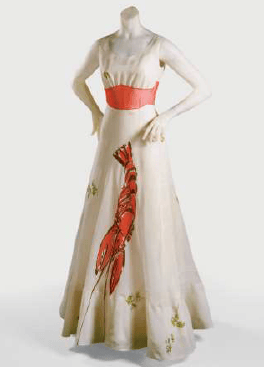
Figure 1: Silk Lobster Dress by Salvador Dali and Schiaparelli Elsa in 1937 (Rawsthorn and Rhodes, 2007)
According to Stern (2004), cultural configurations that motivate fashion designers are not unique to individuals. Rather, cultural configurations result from the collective interactions of members of the society. Fashion designers like Dali and Schiaparelli are motivated by the prevailing and latest configurations of aesthetics in a society. Technically, fashion would not progress without changes in cultural aspects of social class, gender, and consumption. Stern (2004) explained that the rise of the French and Italian fashion systems in the 18th and 19th Centuries were motivated by increased wealth in France and Italy which catalysed the growth of the luxury fashion industry. Fashion designers do not intent to create new products for consumers. Rather, fashion designers adjust existing products to suit the dynamics in social aesthetics. Thus, fashion motivates audience and the society at large to aspire towards modernity in cultural configurations.
Contrarily, art is inspirational rather than being motivational. Khan (2012) explained that whereas fashion is a motivated collaboration between wearers, designers and manufacturers, art is a private product of an individual artist. Art results from critical thinking and deep contemplation of artists. Mimetic theories of art from Ancient Greece emphasized that artworks are ‘mimes’ meaning artworks mirror up nature. According to Adamson (2009), Plato and Aristotle highlighted that artists engage in deep contemplation while selecting and presenting imitations of nature. Art is related to how artists perceive the concrete nature of their realities. Jos (2010) added that artworks are shadowy representation of the material world. Thus, fashion is not art because fashion emerges from latest trends in social configurations while art is a product of private opinions and feelings of an artist.
The image below represents the timeless painting of Mona Lisa by Leonardo da Vinci (1509). The oil painting features a sitting female subject portrayed against a serene background. Kim (1998) argued that in Mona Lisa, Leonardo da Vinci intended to communicate the values of beauty, serenity and harmony. The colour of the attire and the hair of the female subject rhyme with the background and create a sense of harmony between the subject and her natural surroundings. Also, the subject adopts a faint smile and a tranquil facial expression to communicate internal serenity in the subject’s thoughts and emotions. Clearly, the painting of Mona Lisa was not inspired by any apparent trends in the 16th-century Europe. Rather, da Vinci’s Mona Lisa seeks to inspire the audience towards the artist’s specific perceptions of serenity and harmony with nature.
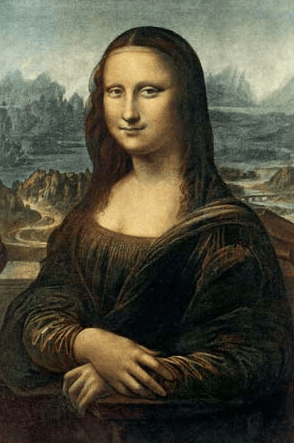
Figure 2: Mona Lisa by Leonardo da Vinci in 1509 (Khan, 2012)
Artists are inspired by the quest for symbolism and naturalism while fashion designers are motivated by cultural modernity. Expressive theories of art emphasize that artworks are manifestations of the internal state of emotional and cognitive parameters of artists. According to Benton (2012), art gives artists an avenue to share their opinions and feelings with their audience; regardless of whether their inner feelings and perceptions are in conformity with latest dynamics in their societies. The most successful and notable products of art are the ones that elicit the strongest thoughts and emotions from the audience. Therefore, art provides an avenue through which artists inspires their audience to empathize with the inner thoughts and feelings.
Besides the separateness of fashion and art in regards to purpose, fashion also differs from art in regards to the aspect of durability. Essentially, art is more durable than fashion. The primary identity of art is its ability to demonstrate timelessness. According to Adamson (2009), pragmatic theories emphasize that art is a means of communication and a vessel of cultural and historical continuity. Art is durable because artworks represent and express naturalistic and symbolic ideals that permeate throughout the history of human societies. According to During (2003), artworks represent the inner thoughts and feelings of artists that the audience also struggle with in their lives, regardless of their period in the history of humanity. The durable nature of art accounts for why artworks from ancient and medieval times are still presented in museum.
The image below portrays the timeless sculpture of The Thinker (1903) by Auguste Rodin. The Thinker represents a visibly healthy and strong man lost in thought. The man is not clothed, and is seated on a rock. Perhaps, Rodin wanted to inspire his audience to put themselves in the thoughtful position of The Thinker. Geczy and Karaminas (2012) explained that humans have, throughout recorded history, pondered over several mysteries on their existence, the origin of life, their mortality, and the evasive nature of reality. The quest for reality is a timeless journey that existed in ancient Greece through to modern times. Therefore, artworks create timeless messages that relate to the inherent existential concerns that have prevailed throughout the history of human civilizations.

Figure 3: The Thinker by Auguste Rodin in 1903 (Geczy and Karaminas, 2012)
Contrarily, fashion is dynamic and varies from one period to another. As aforementioned, Shakespeare once commented that, “fashion wears out more apparel than the man.” Oscar Wilder also commented that, “fashion is a form of ugliness so intolerable we have to alter it every six months” (Khan, 2012, p. 237). Moreover, William Morris said, “fashion is a strange monster born of the vacuously of the lives of rich people and the eagerness of competitive commence” (Mackrell, 2005, p. 117). From these comments, it is apparent that fashion is dynamic concept that evolves based on the fast-changing trends in the social spheres of life. In particular, sartorial fashion changes at the same pace as the evolution of aesthetic appeals in the society.
The two images below represents two different dress styles from two different periods. The first dress was designed by Eduard Wimmer in 1910. Wimmer’s dress is medium-sleeved and features a fully covered chest section. Probably, the conservative nature of Wimmer’s dress was proper for the prevalent cultural norms in the early 1900s. On the other hand, the second dress was designed by Gianni Versace in 1991. The 1991 dress by Versace is more liberal and erotic than the 1910 dress by Wimmer as evidenced by the open upper section and the lack of sleeves. Geczy and Karaminas (2012) summarized that the different dressing styles between 1910 and 1991 reveal that fashion is dynamic and changes according the prevailing cultural values of any given time.
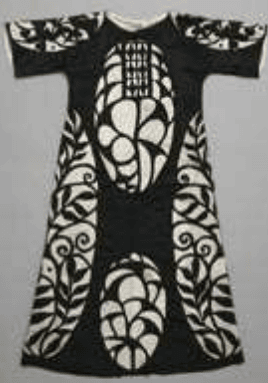
Figure 4: Dress by Eduard Wimmer in 1910 (During, 2003)
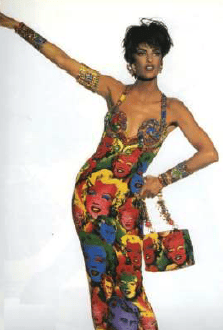
Figure 5: Dress by Gianni Versace in 1991 (Kim, 1998)
Ribeiro (2017) asserted that fashion must be static and portray timeless values for it to be considered an art. Pieces of art are not constrained by the time parameter. Rather, art is a durable practice because it allows artists to express concepts and values that are not affected by changes in cultural configurations. Contrarily, fashion always tends to be futuristic. According to Geczy (2015), futurism is concerned with exhibiting the modern and cutting-edge values on life. Thus, dress codes which were considered futuristic and trendy in the early 1900s are no longer considered futuristic in the year 2017. The limited durability of fashion relative to art is attributable to the need for fashion designers to sustain competitive commercialization of their designs. Therefore, art and fashion are separate concepts based on the element of durability.
Also, the difference between art and fashion emerges where art is a natural ability while fashion design is a learned ability. Adamson (2009) highlighted that renowned artists including Leonardo da Vinci and Pablo Picasso developed their natural abilities for painting and drawing from their young ages. Artistry is an innate talent that grows through self-motivated reflection. Since art involves the expression of inner thoughts and feelings of artists, it is difficult to guide an artist towards thinking and feeling in predetermined ways. Thus, art rely on the talent and natural abilities of artists to depict their feelings and perceptions of the world around them. Contrarily, fashion is a learned trade. According to Stern (2004), fashion designers attend classes and engage in mentorship programs to hone their designing skills. Fashion involves learning to perceive the changes in the society and developing styles that match the changes in social configurations. Fashion designers must learn to pay special attention to commercial trends in their surroundings to stay ahead of the competitive and commercial nature of the fashion industry. Therefore, exemplary works of art result from the talent of the artists while successful products of fashion result from the learned skills of fashion designers.
Lastly, fashion is not art because fashion sends similar messages to all consumers while art sends different messages to different audience. Benton (2012) explained that the meanings of artworks are derived through critical interpretation of the intentions of the artist. Artworks are unique expression of the artists’ opinions and feelings. Therefore, unearthing the internal feelings and thoughts of an artist during the development of a piece of art require critical and sometimes futile interpretation from the audience. The image below represents an Orphism painting by Robert & Sonia Delaunay produced around 1911-1914. Jos (2010) expressed that the Orphism painting offers no immediate meaning to the audience because it features no material similarity with visual reality; thus, every audience will not immediately appreciate the need to abstract strikes of paint to depict an incoherent image. In this regard, the Orphism painting requires viewers to think critically about the importance of creating a sense of dynamism through the use of abstract colours. Thus, the meaning of art is not often apparently clear.
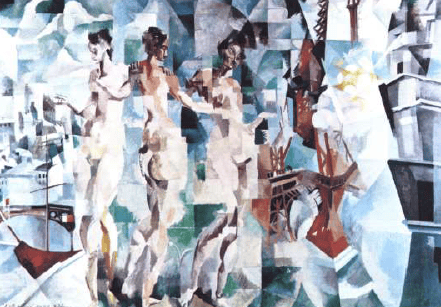
Figure 6: Orphism painting by Robert & Sonia Delaunay around 1911-1914 (Jos, 2010)
Contrarily, fashion offer apparent meaning based on the prevailing cultural configuration of a particular time. Adamson (2009) argued that fashion consumers do not need time to critically appraise the intended purposes of fashion designers. Rather, products of fashion designers, including clothing, are created to serve specific purposes that are clear to all consumers. The images below represent the designs of Modello di Tuta by Italian fashion designer Ernesto Thayaht.

Figure 7: Modello di Tuta by Ernesto Thayaht in 1918 (Stern, 2004)
According to Rawsthorn and Rhodes (2007), Modello di Tuta was a single-piece garment designed in 1918 for men and boys engaged in rigorous physical work. The design and the intended purpose of the Tuta did not require further interpretation from the wearers. Therefore, fashion is not art because fashion products like Thayaht’s Tuta serve utilitarian purposes while artworks like the Delaunay’s Orphism painting have nondeterministic meanings that require separate interpretation from each viewer.
In conclusion, it is evident that fashion does not qualify as an art. The history of art traces back to the Ancient Greek civilization while fashion emerged in the Early Renaissance period; hence, art had been in existence several centuries before fashion because recognizable. Also, fashion does not qualify as an art because fashion serves the purpose of commercially motivating consumers while art inspires the audience to empathize with artists’ feelings and cognitions. Moreover, fashion is not art because fashion is dynamic whereas art is durable. In addition, fashion is different from art because fashion designers learn their skills while artists rely on their natural abilities. Lastly, fashion is not art because fashion products carry specific and clear meanings while the meanings of artworks require critical interpretation from the audience. Overall, fashion is not a form of art.
- ADAMSON, G. 2009, Thinking through craft, Oxford: Berg.
- BENTON, A. 2012, Fashion as art/art as fashion: Is fashion art? Columbus: Ohio State University Press.
- DURING, S. 2003, The cultural studies reader (2nd ed), London: Rutledge.
- GECZY, A AND KARAMINAS, V. 2012, Fashion and art, Oxford: Berg.
- GECZY, A. 2015, Fashion’s double: representations of fashion in painting, photography and film, London: Bloomsbury Academic.
- JOS, A. 2010, Fashion and imagination: About clothes and art, New York: ArtEZ Press.
- KHAN, N. 2012, ‘Cutting the fashion body: Why the fashion image is no longer still,’ Fashion Theory: The Journal of Dress, Body and Culture, vol. 16, no. 2, pp. 235-250.
- KIM, S. 1998, ‘Is fashion art?’ Fashion theory: The Journal of Dress Body and Culture, vol. 2, no. 1, pp. 51-71.
- MACKRELL, A. 2005, Art and fashion: the impact of art on fashion and fashion on art, London: Batsford.
- RAWSTHORN, A AND RHODES, Z. 2007, ‘Is fashion a true art form? in M. Bernard (ed),’ Fashion Theory: A reader, London: Rutledge.
- RIBEIRO, A. 2017, Clothing art: The visual culture of fashion, 1600-1914, New Haven: YUP.
- STERN, R. 2004, Against fashion: clothing as art, 1850-1930, Cambridge: MIT Press.

